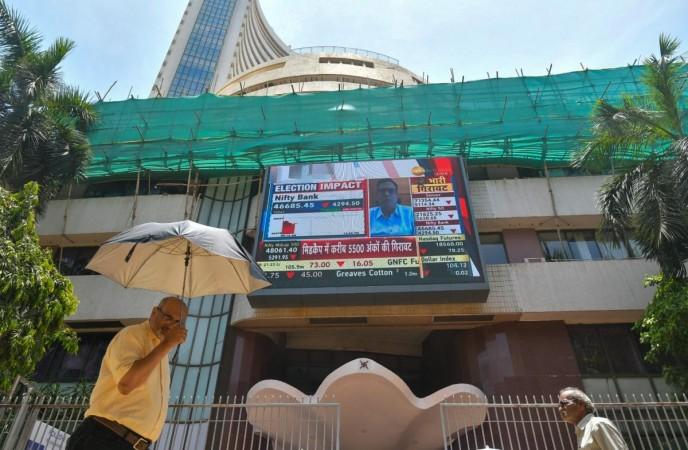
The escalating conflict in the Middle East has dealt a significant financial blow to investors, with a staggering Rs 10 lakh crore loss recorded on October 3, 2024. India's equity indices, the Sensex and the Nifty, plummeted, with the former falling by 1,769 points, or 2.10 per cent, to 82,497, and the latter dropping 546 points, or 2.12 per cent, to 25,250. The market trend was overwhelmingly negative, with 2,864 shares in the red, 1,120 in the green, and 92 closing without any change.
The sharp fall resulted in a decline in the market valuation of all companies listed on the Bombay Stock Exchange (BSE) by about Rs 10 lakh crore, bringing it down to Rs 465 lakh crore. This significant drop was not limited to large-cap stocks. Midcap and smallcap stocks also experienced selling pressure. The Nifty midcap 100 index fell by 1,333 points, or 2.21 per cent, to 59,024, and the Nifty smallcap index fell by 378 points, or 1.96 per cent, to 18,952.
Almost all NSE indices closed in the red, with major losers including Auto, Fin Service, IT, FMCG, Realty, Energy, Private Bank, and Infra indices. In the Sensex pack, the top losers were L&T, Axis Bank, Tata Motors, Reliance, Maruti Suzuki, Asian Paints, Bajaj Finance, Wipro, Kotak Mahindra Bank, Bajaj Finserv, Titan, HDFC Bank, HCL Tech, and Power Grid. Only JSW Steel managed to close in the green.
Market experts attributed the sharp downturn in the domestic market to Iran's launch of ballistic missiles at Israel, sparking fears of retaliation and escalation into war. This geopolitical tension could potentially drive up oil prices and lead to inflationary pressures. This is reminiscent of the 1990 Gulf War when oil prices spiked due to the conflict, leading to a global economic slowdown.

In addition to geopolitical tensions, new SEBI regulations for the F&O segment have raised concerns about reduced trading volumes in the broader market. The latest circular by the capital market regulator Securities and Exchange Board of India (SEBI) on charges levied by market infrastructure institutions (MIIs) may significantly impact the revenue of brokerage firms and overall trading volume as well. Until now, MIIs have followed a volume-based slab-wise charge structure, which, according to SEBI, can hinder them from ensuring equal and fair access to all market participants.
Furthermore, with attractive valuations in China, Foreign Institutional Investors (FIIs) have redirected their funds, adding pressure on Indian stocks. On October 1, FIIs extended their selling as they sold equities worth Rs 5,579 crore, while Domestic Institutional Investors (DIIs) extended their buying as they bought equities worth Rs 4,609 crore.
Vinod Nair, Head of Research at Geojit Financial Services, provided a detailed analysis of the situation. He stated that the initial target of 25500 had been achieved, and hence it was revised downwards to 24800. On the upside, 25600 – 25550 is the immediate hurdle from a short-term perspective. He also mentioned that the Nifty Bank index, which was leading the upmove during the latter half of September, is now correcting and leading the fall. He expects the fall to continue towards 49700, which is the low it touched in August. On the upside, 52600 – 52700 is a crucial resistance.
The current situation underscores the interconnectedness of global markets and the potential impact of geopolitical events on financial markets. As the situation continues to unfold, investors and market participants will be closely monitoring developments in the Middle East and their potential impact on global and domestic markets. The importance of diversification and risk management in investment strategies is highlighted in these uncertain times.

















